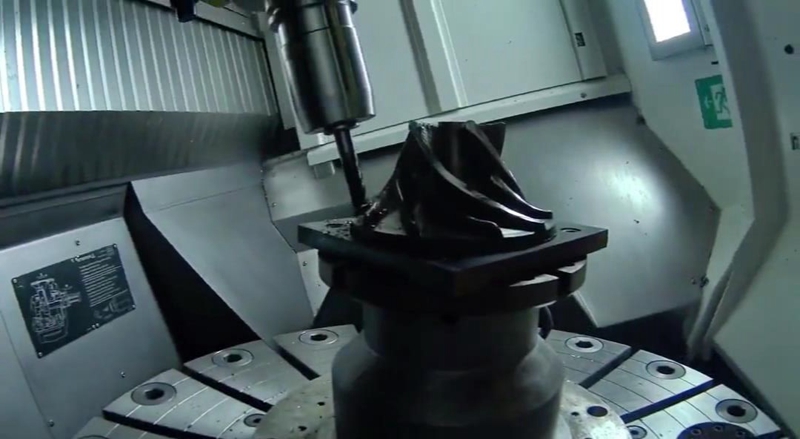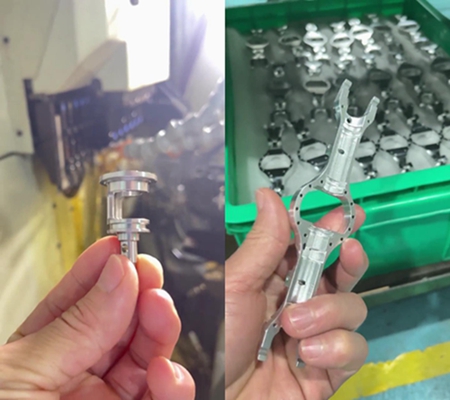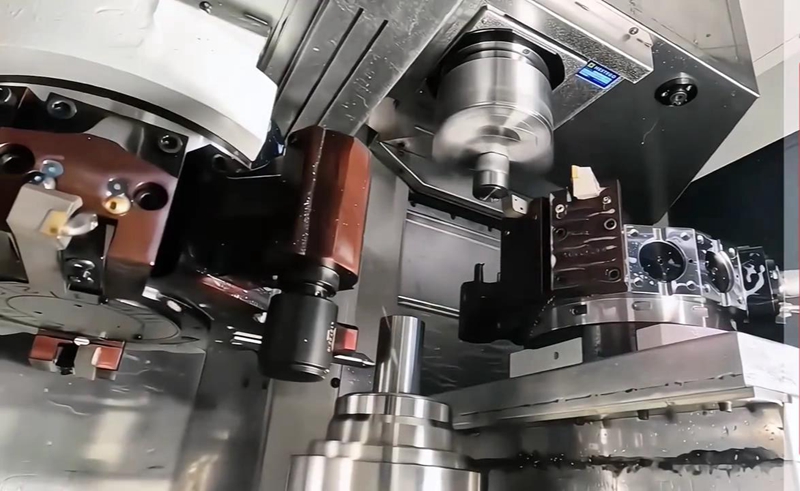- Llámanos al
86-0755-33182768 - Envíanos un correo electrónico
sales@precisionchina.com - Skype en línea
hawkwang_007
Fresado CNC vs torneado CNC: las diferencias
Puede 22, 2024
Fresado CNC vs torneado CNC: las diferencias
Antes de continuar discutiendo la diferencia entre fresado CNC y torneado CNC., definamos qué es el fresado CNC. Una máquina CNC trabaja para producir un producto terminado mediante un proceso automatizado., recibir comandos desde una computadora con software preprogramado.
¿Qué es el fresado CNC??

Empecemos con el fresado. Primero, Hay fresadoras CNC de 3 ejes que son más tradicionales.. La herramienta de corte puede moverse 3 direcciones – X, Y, y eje Z.
Si bien esto establece algunos límites a la geometría de las piezas, es suficiente para completar la mayoría de los trabajos que requieren fresado. Una amplia gama de herramientas de fresado puede proporcionar diferentes métodos de corte, como el fresado de extremos., fresado frontal, fresado hueco, etc..
5-fresado de ejesfresado de 5 ejes
El fresado multieje permite 4 o más ejes, incluyendo la rotación de la herramienta y la mesa de trabajo. Esto proporciona una dimensión extra de flexibilidad.. 5-Las fresadoras de eje son las más comunes y pueden crear prácticamente cualquier cosa que pueda fabricarse con fresado..
Las dimensiones del bloque inicial suelen ser mayores que las dimensiones generales de la pieza final.. Por lo tanto, El fresado de precisión es posible en todos los lados.. Las tolerancias son muy estrictas., por lo que lograr un excelente acabado superficial es fácil de lograr.
¿Qué es el torneado CNC??

El torneado es un proceso en el que una pieza de trabajo gira mientras una herramienta de corte retira material de ella.. La herramienta de corte suele ser de punta única., Herramienta no giratoria que se mueve a lo largo de la pieza de trabajo y elimina continuamente capas de material según el diseño hasta que coincida con la forma deseada..
Antes de que se aplicaran las computadoras a esto Las aplicaciones incluyen piezas para autopartes., el procedimiento era manual y requería supervisión constante para lograr objetivos definidos. Hoy en día, El torneado suele realizarse mediante máquinas automatizadas que siguen algoritmos y reglas numéricas..
El torneado CNC puede producir eficazmente diferentes formas, como conos, cilindros, discos, polígonos, y a veces incluso hexágonos u otros polígonos regulares. Se desarrollan diferentes formas combinando numerosos procesos., incluyendo torneado (cónico o recto), ranurado exterior, enhebrar, moleteado, aburrido, y perforacion. Si bien puedes usar muchos materiales para tornear, madera, el plastico, o metal son los más comunes.
El torneado CNC tiene muchas aplicaciones, desde simples tornillos y pernos hasta piezas aeroespaciales o automotrices de alta precisión..
La diferencia entre torneado y fresado CNC

En pocas palabras, La diferencia entre torneado CNC y fresado es qué pieza se mueve: la máquina en sí o la materia prima.. Los procesos de fresado CNC implican que el material se mantenga en su lugar mientras las herramientas de corte giran alrededor de él.. Torneado CNC, a mano o a máquina, Requiere que las herramientas permanezcan en el mismo lugar mientras el material gira a gran velocidad para crear la forma exacta..
Existen diferencias visibles entre los procesos de fresado y torneado CNC en las características operativas y el uso de piezas con complejidades.. Abajo, He explicado las diferencias:
Función: En el proceso de molienda, El material se elimina cuando la herramienta gira alrededor de la pieza de trabajo.. En torneado CNC, la herramienta trabaja en la pieza de trabajo giratoria.
Piezas fabricadas: Con la ayuda del fresado CNC, Los propietarios de talleres mecánicos fabrican piezas geométricamente complejas.. El torneado CNC fabrica piezas cónicas y cilíndricas como rodamientos de bolas y tubos..
Proceso de corte: La herramienta se desengancha de la pieza en el fresado CNC. En torneado CNC, la herramienta está en contacto continuo con la pieza de la herramienta.
Las características de la herramienta: Las fresadoras CNC utilizan herramientas de corte multipunto, como fresas de extremo., y escariadores. La herramienta tiene más de dos filos de corte que se acoplan con la pieza de trabajo para la fabricación.. Los procesos de torneado CNC utilizan herramientas de corte de un solo punto, como cortadores de mosca, para eliminar el material.. En torneado CNC, Sólo un punto de la herramienta entrará en contacto con la pieza de trabajo..
Sin embargo, Tenga en cuenta que el fresado CNC generalmente se considera el método más recomendado para producir piezas con formas complejas., mientras que el torneado CNC es igualmente bueno para tareas más simples., formas redondas. Sin embargo, Puede utilizar estos dos procesos de forma secuencial porque puede haber situaciones en las que se requieran ambos procesos de operación..
¿Debería utilizar torneado o fresado??

cual es mejor para tu proyecto? Bien, si tu pieza es axialmente simétrica, probablemente querrás considerar el torneado CNC.
Siempre que el material base sea apto para tornear, un torno o centro de torneado puede fabricar eficazmente su pieza con tolerancias dimensionales precisas, incluso para longitudes y diámetros relativamente grandes!
Si su proyecto tiene una geometría más compleja que la que el torneado CNC puede acomodar, es posible que desee considerar el fresado CNC en su lugar. El fresado puede producir una variedad infinita de formas., y como torneado CNC, puede cumplir con tolerancias extremadamente estrictas.
Conclusión
Si bien estos dos a menudo se incluyen bajo el mismo término: mecanizado CNC - Ellos no son los mismos. Aún, pueden complementarse entre sí maravillosamente para producir piezas con alta precisión.





